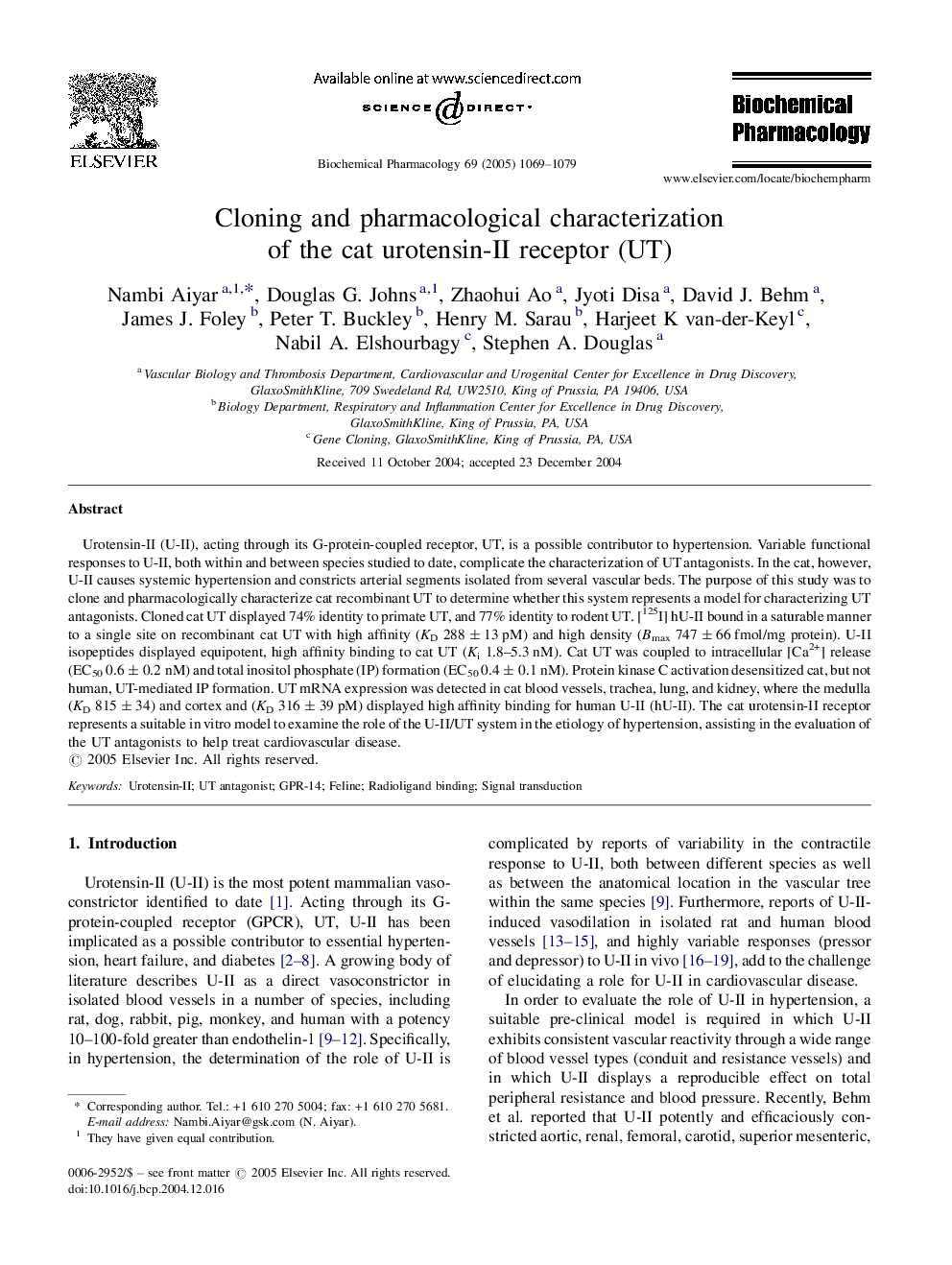| Article ID | Journal | Published Year | Pages | File Type |
|---|---|---|---|---|
| 9001647 | Biochemical Pharmacology | 2005 | 11 Pages |
Abstract
Urotensin-II (U-II), acting through its G-protein-coupled receptor, UT, is a possible contributor to hypertension. Variable functional responses to U-II, both within and between species studied to date, complicate the characterization of UT antagonists. In the cat, however, U-II causes systemic hypertension and constricts arterial segments isolated from several vascular beds. The purpose of this study was to clone and pharmacologically characterize cat recombinant UT to determine whether this system represents a model for characterizing UT antagonists. Cloned cat UT displayed 74% identity to primate UT, and 77% identity to rodent UT. [125I] hU-II bound in a saturable manner to a single site on recombinant cat UT with high affinity (KD 288 ± 13 pM) and high density (Bmax 747 ± 66 fmol/mg protein). U-II isopeptides displayed equipotent, high affinity binding to cat UT (Ki 1.8-5.3 nM). Cat UT was coupled to intracellular [Ca2+] release (EC50 0.6 ± 0.2 nM) and total inositol phosphate (IP) formation (EC50 0.4 ± 0.1 nM). Protein kinase C activation desensitized cat, but not human, UT-mediated IP formation. UT mRNA expression was detected in cat blood vessels, trachea, lung, and kidney, where the medulla (KD 815 ± 34) and cortex and (KD 316 ± 39 pM) displayed high affinity binding for human U-II (hU-II). The cat urotensin-II receptor represents a suitable in vitro model to examine the role of the U-II/UT system in the etiology of hypertension, assisting in the evaluation of the UT antagonists to help treat cardiovascular disease.
Related Topics
Health Sciences
Pharmacology, Toxicology and Pharmaceutical Science
Pharmacology
Authors
Nambi Aiyar, Douglas G. Johns, Zhaohui Ao, Jyoti Disa, David J. Behm, James J. Foley, Peter T. Buckley, Henry M. Sarau, Harjeet K van-der-Keyl, Nabil A. Elshourbagy, Stephen A. Douglas,
